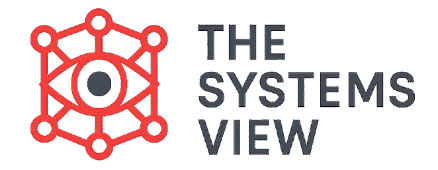We have been exploring systems archetypes that describe common problems. Now, let’s look at a powerful pattern called Tragedy of the Commons. This archetype happens when a shared resource is used by many people. Each person acts in their own self-interest and uses the resource for their own gain. Over time, the shared resource is ruined for everyone.
Imagine a large, open pasture where anyone can let their cows graze. Each farmer, acting in their own best interest, puts an extra cow on the pasture to make more money. This seems like a small action for one farmer, but when every farmer does the same thing, the pasture becomes overgrazed and turns into a field of mud. Soon, no one can use the pasture, and all the farmers suffer. This is the core idea of “Tragedy of the Commons.”
What is the “Tragedy of the Commons” Archetype?
This archetype is a pattern where a shared resource is depleted because each individual user takes as much as they can without thinking about the whole group. The key parts of this pattern are:
- A Shared Resource: A resource that is open to everyone and is limited (e.g., clean air, a fish-filled lake, a common piece of land).
- Individual Gain: Each person sees a benefit in using more of the resource for themselves (e.g., catching more fish to sell).
- Reinforcing Loops: Each person’s actions are part of a reinforcing loop. The more they take, the more they gain, which encourages them to take even more.
- The Shared Loss: When everyone does this, the resource gets used up faster than it can renew itself. Eventually, the resource is gone, and everyone loses.
The trap is that each person believes their single action won’t make a big difference. They think, “If I don’t take it, someone else will, so I might as well get it now.” But when everyone thinks this way, the shared resource is destroyed.
Important: The core lesson of “Tragedy of the Commons” is that when people act only in their own self-interest with a shared resource, the result is often a negative outcome for the entire group. The short-term gain for the individual leads to a long-term loss for everyone.
A Common Example: Overfishing
This archetype is often seen with natural resources.
- Shared Resource: An ocean with a limited number of fish.
- Individual Gain: Each fishing company wants to make the most money, so they catch as many fish as they can.
- Reinforcing Loop: The more fish they catch, the more money they make, which encourages them to buy bigger boats and catch even more fish.
- The Shared Loss: Because all the companies are doing this, the number of fish in the ocean goes down very quickly. Soon, there are not enough fish for any company to catch, and the entire fishing industry suffers.
The Practice Example from the Ebook: The Office Refrigerator
The ebook provides a simple example of an office refrigerator.
- Shared Resource: A refrigerator in an office kitchen that everyone can use.
- Individual Gain: Each person wants to have fresh food, so they bring their lunch and put it in the refrigerator. They might also leave old food there, thinking someone else will clean it.
- Reinforcing Loop: The more food people leave, the dirtier the fridge gets. Because it’s dirty, no one wants to clean it. The more people that think, “It’s not my job to clean it,” the worse the problem becomes.
- The Shared Loss: Eventually, the refrigerator becomes so dirty and full of old food that no one can use it anymore. The shared resource is ruined, and everyone loses.
How to Find a Lasting Solution
To solve this archetype, you must change the rules of the system so that individual gain is connected to the well-being of the whole group.
- Regulate the Resource: Put rules in place to manage the use of the resource. For the fishing example, this might mean a law that limits how many fish each company can catch.
- Make the Resource Private: Sometimes, the best solution is to give the resource to one person or group. That person or group then has a reason to take care of the resource because their long-term success depends on it.
- Encourage a Shared Sense of Responsibility: Bring the group together to talk about the problem. Help them see that their individual actions are hurting the entire group. Encourage a sense of shared purpose and responsibility for the resource.
- Use Social Consequences: If people see that others are taking more than their share, they can hold each other accountable through social pressure or public shaming.
Conclusion
The Tragedy of the Commons archetype teaches us that when a shared resource is not managed, it will inevitably be destroyed. It is a powerful reminder that our actions have consequences, not just for ourselves, but for everyone around us. By learning to recognize this pattern, we can create systems with clear rules and a shared sense of responsibility. This is the only way to protect our common resources and ensure their availability for the long term.



